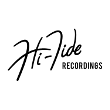doctorock78
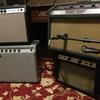
Joined: Aug 08, 2018
Posts: 42
Honolulu, HI



|

Posted on Sep 18 2018 02:32 PM
Hi all, apologies if this is already common knowledge but I just discovered that with my vintage Fender unit as well as the Gomez unit, a buffered pedal placed after the unit solves the tone / volume loss issue.(in my case it's an EHX Soul Food with internal switch set to "buffer" mode... highly recommended) Even if the pedal is OFF it still fixes the issue! and of course you could turn it on, with gain at zero, treble to taste, and volume knob set to boost a little if desired. I know this isn't a problem for those who leave the unit always ON, but I am experimenting with having access to both onboard reverb (vintage combo amp) AND the outboard drip ships during live shows, in which case the drop in volume when engaging the 6G15 circuit was problematic. Hope this helps someone else out there in surfland...
— Robbin Henley (Men in Grey Suits HONOLULU)
https://www.facebook.com/Men-In-Grey-Suits-207897529235582/
www.meningreysuits.com
|
synchro
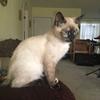
Joined: Feb 02, 2008
Posts: 4126
Not One-Sawn, but Two-Sawn . . . AZ.





|

Posted on Sep 20 2018 07:27 AM
There are dedicated buffers as well my modest pedalboard has a buffer bot in and out from a single unit. It’s all about matching/controlling impedance. A high input impedance and a low output impedance really spruces up a signal chain.
— The artist formerly known as: Synchro
When Surf Guitar is outlawed only outlaws will play Surf Guitar.
|
Surfadelphia

Joined: Sep 04, 2017
Posts: 403
|

Posted on Sep 20 2018 01:16 PM
This is all very interesting. So would the best location for a buffer pedal be at the end of the signal chain, right before the amp (in my case: guitar, pedal board, tube reverb unit, buffer pedal/unit, amp)?
Also, can anyone recommend a dedicated buffer pedal?
Last edited: Sep 20, 2018 13:17:57
|
synchro

Joined: Feb 02, 2008
Posts: 4126
Not One-Sawn, but Two-Sawn . . . AZ.





|

Posted on Sep 20 2018 10:21 PM
Surfadelphia wrote:
This is all very interesting. So would the best location for a buffer pedal be at the end of the signal chain, right before the amp (in my case: guitar, pedal board, tube reverb unit, buffer pedal/unit, amp)?
Also, can anyone recommend a dedicated buffer pedal?
If you have a long cord from your guitar to your pedalboard or tank, a buffer up front might be advisable. If you have a number of “true bypass” effects, it might be advisable to have a buffer at the end of your signal chain.
It takes a little explaining, but in case anyone wants the six-bit explanation, here goes.
What you want in a signal chain is a high input impedance and a low output impedance. Once you have this, the capacitive effects of patch cables and any effects are minimized. Without a laborious explanation, I'll state that more cable between the between your guitar output jack and the input amp of the amp tends to erode the highs and make the overall sound a bit limp. Actually, it would be more accurate to say that more capacative impedance between the between your guitar output jack and the input amp of the amp tends to erode the highs. Impedance can be the resistance of a patch cable, the internal resistance of any devices (effects, etc) but as a rule, the big concern is capacitance. That is what bleeds your highs to ground.
So, if your cable has an impedance of 1,000 ohms and the input impedance of the next device in line is also 1,000 ohms, the capacitance of that cable will hold a lot of sway. OTOH, if your cable has an impedance of 1,000 ohms and the input impedance of the next device in line is also 1,000,000 ohms, the capacitance of that cable will have very little influence whatsoever on the quality of the signal.
So, the desired situation would be a saw-tooth pattern, low output impedance, high input impedance. What matters is the ratio between output impedance from any segment of your signal chain and the input impedance of the next device. So long as you have this sawtooth pattern, your signal will remain healthy and sound great. This is where a buffer comes into play by providing a very high impedance input and a relatively low impedance output.
A buffer is a unity gain amplifier, which is to say that it doesn’t add gain, but basically makes a fresh copy of your signal and passes it along. (If the idea of your signal being copied makes you uncomfortable, keep in mind that every stage of amplification does this, whether in a tube amp or a solid state buffer.) In some ways, a buffer is like a repeater in a long distance communications line.
Buffers do not degrade your signal or make it harsh. It probably would hurt to have a buffer between every pedal and, in fact, pedals which are not “true bypass” all employ buffers.
What I’ve found is that you have to experiment a bit. Let me use my monsterously large pedal board as an example.

My board started with a Stanley Blue Nebula, which is true bypass and has a built in preamp. The next pedal is a Catalinbread Topanga, which is switchable. I run mine in buffered mode. Finally, my TC Electronics HOF Mini, which is true bypass. Without buffers, and before switching the Topanga to buffered mode, the signal was very lackluster. After adding a buffer both before and after my pedals, but with all three pedals in the order shown in the picture they were still a bit lacking in oomph. When I reversed the order and placed the HOF Mini up front, followed by the Topanga and ending with the unbuffered Blue Nebula, it all came into focus.
Why? Simple; the 15’ patch cable fed into a buffer, which conditions the signal which goes to the HOF in true bypass, so it probably comes out a bit high impedance, but the buffer in the Topanga fixes that problem and sends a low impedance signal to the front of the Blue Nebula. The Nebula does its thing and passes its output to the final buffer, and then into my amp, via a 10’ patch cable.
As far as buffer recommendations are concerned, my experience is limited. I use a Temple Audio Bufrmod, which is an accessory for my pedalboard system and uses a somewhat proprietary mount. Here’s a picture, complete with its very own personal protection Lynx. 

For a stand-alone unit, perhaps the Truetone Pure Tone Buffer, a recommendation I make based upon my experiences with other Truetone products. Buffers are actually just packaged op amps, so it’s pretty hard to screw one up. As long as it’s quiet in operation and physically durable, those would be my only concerns. There are a lot of choices. Where that’s concerned, just about any buffered pedal will do the trick, as long as it’s of decent quality, but dedicated buffers tend to take up less room on the old pedalboard than the average pedal. Many are about the size and conformation of the HOF Mini on my pedalboard.
— The artist formerly known as: Synchro
When Surf Guitar is outlawed only outlaws will play Surf Guitar.
Last edited: Sep 21, 2018 10:17:42
|
Surfadelphia

Joined: Sep 04, 2017
Posts: 403
|

Posted on Sep 21 2018 07:34 AM
The last pedal on my board is a Catalin Bread Belle Epoche which I have set to buffer mode (all the other pedals on the board are true bypass). Ironically, I set the Belle Epoche to buffer mainly based on the ear test...had no idea of how this all works, everything just sounded better that way. The tone loss I get is when I have my tube reverb tank at the end of the chain turned off (when I don't have the reverb unit as part of the chain, my tone is fine). I primarily use the tank for drippy surf tones and the in amp reverb for everything else (my in amp reverb is excellent, just not very drippy). It sounds like a buffer between the reverb unit and the amp would address the tone issues when the reverb unit is off. Ok...good excuse to try a buffer pedal like the Tru Tone.
Last edited: Sep 21, 2018 07:35:36
|
synchro

Joined: Feb 02, 2008
Posts: 4126
Not One-Sawn, but Two-Sawn . . . AZ.





|

Posted on Sep 21 2018 07:50 AM
That should do the trick.
— The artist formerly known as: Synchro
When Surf Guitar is outlawed only outlaws will play Surf Guitar.
|
Surfadelphia

Joined: Sep 04, 2017
Posts: 403
|

Posted on Sep 21 2018 09:28 PM
The only pedals I have in my pedal stash that are not true bypass are a Boss Tremolo and Boss '63 Reverb pedal and I didn't really want to use them as the buffer....so I ordered a buffer pedal from Saturnworks Pedals. Could of really went cheap with something from China but the Saturnworks is made in the USA w/ good components and was still pretty inexpensive at 39.99.....plus I like supporting small American businesses when I can. Looking forward to trying it out when I get it.
|
SixStringSurfer
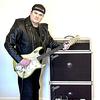
Joined: Sep 23, 2014
Posts: 1344
Memphis, TN


|

Posted on Sep 21 2018 09:41 PM
Dang Synchro, that went over my head. 
— MooreLoud.com - A tribute to Dick Dale.
Last edited: Sep 21, 2018 21:45:17
|
synchro

Joined: Feb 02, 2008
Posts: 4126
Not One-Sawn, but Two-Sawn . . . AZ.





|

Posted on Sep 21 2018 09:44 PM
Surfadelphia wrote:
The only pedals I have in my pedal stash that are not true bypass are a Boss Tremolo and Boss '63 Reverb pedal and I didn't really want to use them as the buffer....so I ordered a buffer pedal from Saturnworks Pedals. Could of really went cheap with something from China but the Saturnworks is made in the USA w/ good components and was still pretty inexpensive at 39.99.....plus I like supporting small American businesses when I can. Looking forward to trying it out when I get it.
My guess is that you’ll be quite happy with this. I agree completely about supporting small American business whenever possible, my Topanga came from a small American company and is a great pedal. I actually have two of them.
Likewise for my Winfield amps, which are superb, and built by Winfield Thomas, a great fellow that lives less than thirty miles away from me. I’ve never had any real problems with my Winfield amps, but we’re the unthinkable ever to happen, I’d only have to schlep my amp a bit down the road to have it looked at.
The Blue Nebula is about as British as can be, but is once again small business in action. I think that the hardware is all assembled by one man with some other folks doing the DSP processing and another fellow creating the patches that use the DSP programming. It’s a labor of love, and you can hear the love in every note. 
The biggest thing I learned about buffers is that it pays to experiment. Changing the order of effects and the placement of the buffer can have a profound effect.
— The artist formerly known as: Synchro
When Surf Guitar is outlawed only outlaws will play Surf Guitar.
|
synchro

Joined: Feb 02, 2008
Posts: 4126
Not One-Sawn, but Two-Sawn . . . AZ.





|

Posted on Sep 21 2018 09:45 PM
SixStringSurfer wrote:
Dang Synchro, that went over head. 
Better read it over again, ther will be a test. 
— The artist formerly known as: Synchro
When Surf Guitar is outlawed only outlaws will play Surf Guitar.
|
SixStringSurfer

Joined: Sep 23, 2014
Posts: 1344
Memphis, TN


|

Posted on Sep 21 2018 09:49 PM
synchro wrote:
SixStringSurfer wrote:
Dang Synchro, that went over my head. 
Better read it over again, ther will be a test. 
It better be open book or I am screwed. 
— MooreLoud.com - A tribute to Dick Dale.
|
synchro

Joined: Feb 02, 2008
Posts: 4126
Not One-Sawn, but Two-Sawn . . . AZ.





|

Posted on Sep 21 2018 09:59 PM
Fortunately, the test is aways open book, when it comes to guitar stuff. If not. I’d have been severely screwed many times over.
— The artist formerly known as: Synchro
When Surf Guitar is outlawed only outlaws will play Surf Guitar.
|
Surfadelphia

Joined: Sep 04, 2017
Posts: 403
|

Posted on Sep 22 2018 11:37 AM
When it comes to messing around with guitars and gear, my mantra is "do no harm". Don't do anything that can fry something or is not easily reversible.
I understand my own skill level when it comes to these things. Like Dirty Harry said "A man has to know his limitations".
Regarding small American companies, my amp is from Jer Delisle who makes DeLisle Amps. These small amp builders generally make very meticulously built stuff that's pretty bullet proof and easy to service. Plus, the prices for many aren't that much more than the mass produced stuff and you are getting a superior product typically built without compromises.
I needed a low wattage tube amp with tube driven reverb and tremolo that didn't sound "small" or "boxy". Unlike the big boys, DeLisle made a 5 watt tube amp w/ reverb and trem in a fullsize 20"x 18" cab with a 12" spkr for about the same price as a CB constructed Fender Princeton Reverb Reissue. Sounds great for any kind of music and any guitar.
Last edited: Sep 22, 2018 11:48:45
|
DeathTide

Joined: Apr 13, 2018
Posts: 1341
New Orleans





|

Posted on Sep 22 2018 11:51 AM
synchro wrote:
Fortunately, the test is aways open book, when it comes to guitar stuff. If not. I’d have been severely screwed many times over.
Thanks for the great detailed explanation! In my production sound world it’s called something else, I think just a line amp for whatever. Mostly wireless cables signal loss from long antenna runs and connector dB loss. But it does exactly what a buffer pedal does - bring the signal back up to full, but not boost it over the correct dB.
The VP of Lectrosonics told me that each BNC connector is about a .2 dB loss, and bumpers are double, and each foot of the low loss RG8 cable I use has about a .04 dB of loss per foot. Or something, it was years ago haha.
— Daniel Deathtide
|
synchro

Joined: Feb 02, 2008
Posts: 4126
Not One-Sawn, but Two-Sawn . . . AZ.





|

Posted on Sep 22 2018 12:48 PM
Surfadelphia wrote:
When it comes to messing around with guitars and gear, my mantra is "do no harm". Don't do anything that can fry something or is not easily reversible.
I understand my own skill level when it comes to these things. Like Dirty Harry said "A man has to know his limitations".
Regarding small American companies, my amp is from Jer Delisle who makes DeLisle Amps. These small amp builders generally make very meticulously built stuff that's pretty bullet proof and easy to service. Plus, the prices for many aren't that much more than the mass produced stuff and you are getting a superior product typically built without compromises.
I needed a low wattage tube amp with tube driven reverb and tremolo that didn't sound "small" or "boxy". Unlike the big boys, DeLisle made a 5 watt tube amp w/ reverb and trem in a fullsize 20"x 18" cab with a 12" spkr for about the same price as a CB constructed Fender Princeton Reverb Reissue. Sounds great for any kind of music and any guitar.
You aren’t likely to harm anything by just plugging pedals, etc. together. The exception would be going from the speaker output and into the input of an effects pedal, or something of that nature. Taking note of the operating voltage and polarity required by various pedals is always a good idea.
I’ve heard good things about DeLisle amps.
— The artist formerly known as: Synchro
When Surf Guitar is outlawed only outlaws will play Surf Guitar.
|
synchro

Joined: Feb 02, 2008
Posts: 4126
Not One-Sawn, but Two-Sawn . . . AZ.





|

Posted on Sep 22 2018 01:16 PM
DeathTide wrote:
synchro wrote:
Fortunately, the test is aways open book, when it comes to guitar stuff. If not. I’d have been severely screwed many times over.
Thanks for the great detailed explanation! In my production sound world it’s called something else, I think just a line amp for whatever. Mostly wireless cables signal loss from long antenna runs and connector dB loss. But it does exactly what a buffer pedal does - bring the signal back up to full, but not boost it over the correct dB.
The VP of Lectrosonics told me that each BNC connector is about a .2 dB loss, and bumpers are double, and each foot of the low loss RG8 cable I use has about a .04 dB of loss per foot. Or something, it was years ago haha.
Basically, I think that’s about it. Back in the old days of two-wire phone systems, there were shacks every so often where telephone traffic was processed and boosted a bit to get it ready for the next hop. Every gadget in your signal chain will, without a doubt, have an effect on the signal.
In the Paleozoic era, all pedals were true bypass and if someone had a bunch of pedals their signal could get pretty wonky. Then buffers were built into pedals, and companies like Boss helped make possible the elaborate pedal boards we see today, because they made inexpensive pedals with buffers which allowed people to mix and match effects, almost without limit.
Then buffers became the boogie man and were blamed for the very problem that they actually alleviate, signal degradation. So now, people buy boutique pedals without buffers and buy the buffers separately. 
As with so many things whether musical or technical, there are principles which govern how things work. It’s not a matter of hard and fast rules, but the better we understand the governing principles the more likely we we are to obtain the results we desire. For example, building a pedalboard for a very specific purpose gave me a very wimpy result, until got the order of the pedals right was able to get the impedances properly matched throughout the signal path. I would say that I picked up 7-10 dB just by changing the order of pedals.
— The artist formerly known as: Synchro
When Surf Guitar is outlawed only outlaws will play Surf Guitar.
|
j_flanders
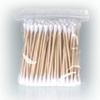
Joined: Jun 28, 2017
Posts: 162
|

Posted on Sep 22 2018 05:00 PM
synchro wrote:
In the Paleozoic era, all pedals were true bypass
They were, what we call today, 'hardwire bypass' or as some like to call it 'half assed bypass'.
'Half', because they left the input 'hanging'/connected, presenting an 'always on' load, and they only switched the output.
It's also why you see so many of these 'Paleozoic' pedals for sale advertised as "modded for true bypass".
They used 2PDT switches.
Then came Boss pedals of which a lot had 'bad' buffers.
Then came (affordable) 3PDT switches which introduced 'true bypass'.
Then came 'motherships of pedalboards' where so many true bypass pedals in series introduced 'extra cable length' (= extra capacitive load, which lowers the frequency of the resonance peak of a passive pickup (not the amplitude of the peak or the Q which is determined by the resistive load) and massive HF roll off when turning down the volume control on tour guitar (the upper part of the volume pot(ential divider) becoming the 'R' in an LP RC filter.
Then came (better) dedicated buffers and updated Boss pedals
Last edited: Sep 22, 2018 17:18:57
|
synchro

Joined: Feb 02, 2008
Posts: 4126
Not One-Sawn, but Two-Sawn . . . AZ.





|

Posted on Sep 23 2018 12:35 AM
j_flanders wrote:
synchro wrote:
In the Paleozoic era, all pedals were true bypass
They were, what we call today, 'hardwire bypass' or as some like to call it 'half assed bypass'.
'Half', because they left the input 'hanging'/connected, presenting an 'always on' load, and they only switched the output.
It's also why you see so many of these 'Paleozoic' pedals for sale advertised as "modded for true bypass".
They used 2PDT switches.
Then came Boss pedals of which a lot had 'bad' buffers.
Then came (affordable) 3PDT switches which introduced 'true bypass'.
Then came 'motherships of pedalboards' where so many true bypass pedals in series introduced 'extra cable length' (= extra capacitive load, which lowers the frequency of the resonance peak of a passive pickup (not the amplitude of the peak or the Q which is determined by the resistive load) and massive HF roll off when turning down the volume control on tour guitar (the upper part of the volume pot(ential divider) becoming the 'R' in an LP RC filter.
Then came (better) dedicated buffers and updated Boss pedals
Great info. One of the challenges is that effects don’t have to live up to industry specs to the extent some other products do. For example, in computer networks, the Layer 1 specs are according to IEEE standards. As a rule you can mix and match vendors without concern that the network will operate at a different voltage than the workstsion’s NIC.
There are standards in the business of music gear, but. Don’t th7nk that they are as reliable adhered to. It would be nice, great in fact, if the industry would adopt standardized language and less advertising hype.
— The artist formerly known as: Synchro
When Surf Guitar is outlawed only outlaws will play Surf Guitar.
|

































